19 Flowering Succulents to Grow for Their Stunning Blooms
These flowering succulents will fill your home and garden with colorful petals.

Flowering succulents offer all the beauty of any other succulent, except the icing on the cake of growing them is their pretty blooms. Most of these succulents are easy to grow with bright light, warm temperatures, and very little water. Even better, some can survive outdoors in freezing temperatures if the roots stay on the dry side through winter. While many types of succulents are grown just for their unique and architectural leaves and stems, these 19 flowering succulents also offer colorful petals and sometimes even fragrance to your home or garden.
Hardy Ice Plant
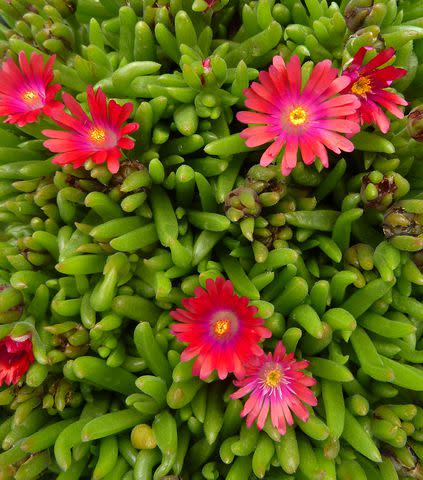
This flowering succulent groundcover can be grown throughout most of the United States (Hardiness Zones 5-10) in sunny, well-drained sites. Wet winters may be fatal for hardy ice plant (Delosperma cooperi), but it can be replanted each spring when the weather warms. The intense purple-pink flowers make it a worthy addition to a full sun garden.
Stapelia
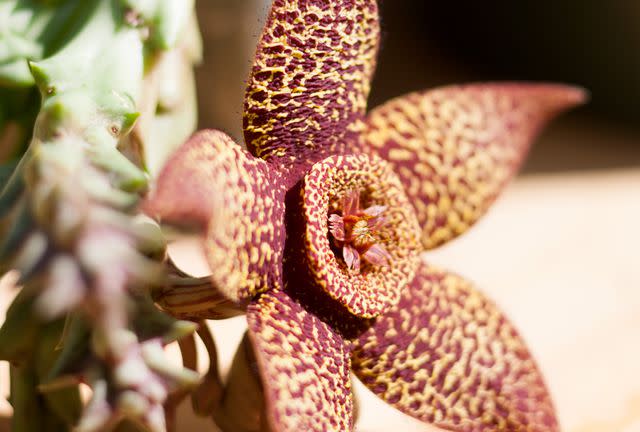
Ed Golich
Stapelia plants (Stapelia spp.) have some of the most unique flowers of all succulents. They range from tiny (less than 1 inch) to massive (up to 8 inches wide) and their colors range from near-black to red to cream. Stapelia flowers are undeniably incredible, but there is a catch. Some (not all) stapelia produce foul-smelling flowers to attract flies for pollination. Place the funky-smelling varieties outdoors while they are blooming if the odor is too unpleasant in your home.
Christmas Cactus
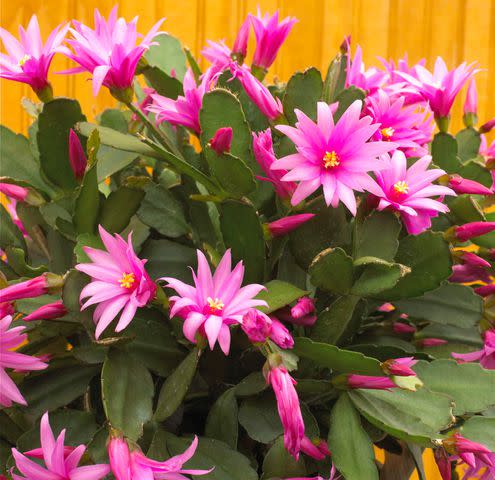
Christmas cactus (Schlumbergera spp.) and its relatives, the Easter and Thanksgiving cactus, are classic flowering houseplants that bloom each year around their namesake holiday. Unlike many succulents, they do not grow in full sun conditions, making them perfect houseplants. They come in various colors, including pink, white, red, orange, and gold.
Prickly Pear
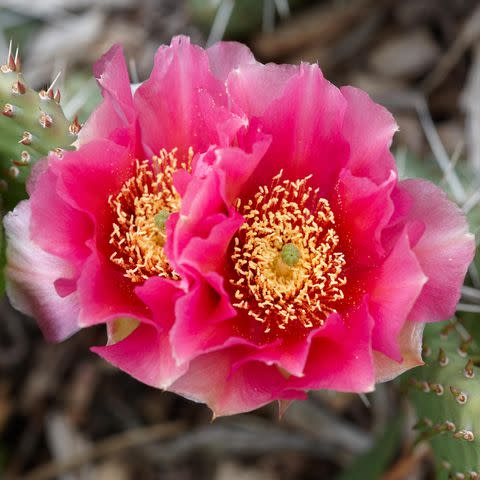
Prickly pear cactus (Opuntia spp.) comes in an astounding range of sizes from 1-15 feet tall, and can be found throughout the Americas. The large flowers are pink, yellow, or orange. As its name implies, prickly pear is covered in sharp spines so it requires some careful handling, but it's still worth growing outdoors in a full-sun area or pots that can be moved under cover in regions with wet winters.
Living Stones
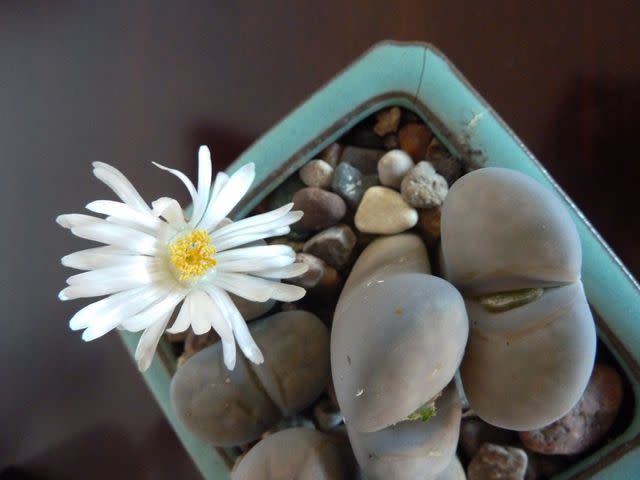
Denny Schrock
Commonly called living rocks or living stones owing to their unique appearance, Lithops succulents are a genuine curiosity. Unlike a pile of rocks, however, living stones produce small white, orange, yellow, or pink flowers. The flower pops right out of the split in the plant, adding to its charm.
Hoya
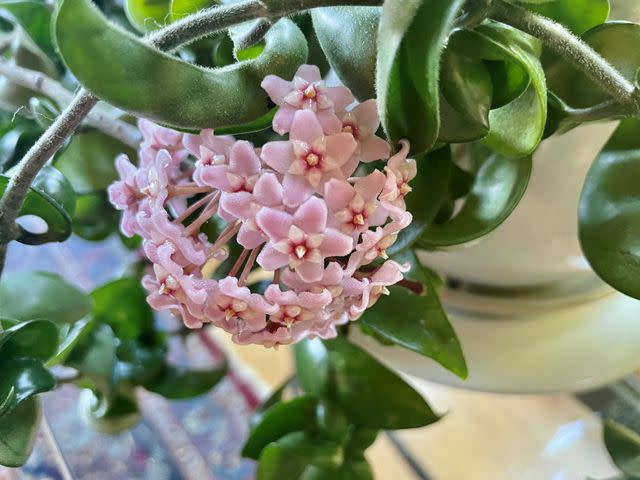
Douglas Rissing / Getty Images
Hoya (Hoya spp.) is a vining succulent plant that grows best in warm locations with indirect sunlight. It can be moved outdoors in summer to a bright, shady space. The waxy flowers are often shades of white, pink, and red. Hoya grows best when it is slightly root-bound in the pot.
Kalanchoe
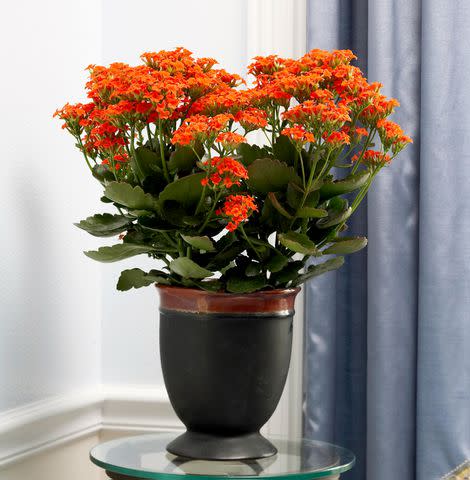
Kalanchoe (Kalanchoe blossfeldiana) needs 6 weeks with 14 hours of darkness daily each winter to initiate flowering. Months later, you will be rewarded with red, orange, white, yellow, or pink flowers. Kalanchoe is a popular late-winter/early-spring blooming houseplant.
Crown of Thorns
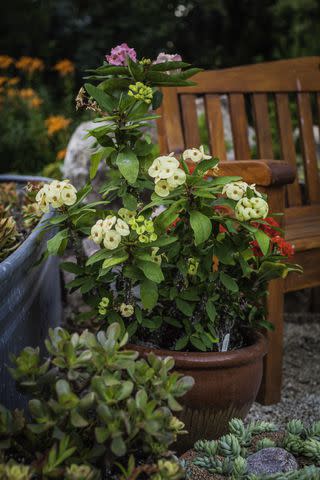
Bob Stefko
Crown of thorns (Euphorbia milii) are flowering succulents that bloom repeatedly throughout the year. The red, pink, white, or yellow "flowers" are actually bracts that surround the tiny nondescript flowers. It's easy to grow indoors as a houseplant.
Crown of thorns plants produce latex sap that can irritate your skin. Wear gloves when handling this plant, especially if it leaks white sap.
Orchid Cactus
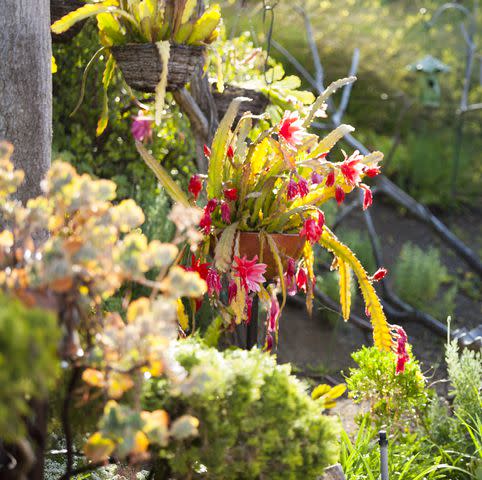
Ed Gohlich
Orchid cacti (Epiphyllum spp.) grow best in hanging baskets in filtered sunlight, simulating their natural habitat of growing in trees. This plant will need to be moved indoors in cool climates that dip below 50°F. During warm weather, the baskets can be hung from trees. Spritz the plant daily with water, but keep the soil dry, or the roots will rot. The flowers can be massive, up to 12 inches wide. They are often white but can be found in orange, yellow, and pink.
Related: The 5 Best Soil for Succulents of 2024
Moss Rose
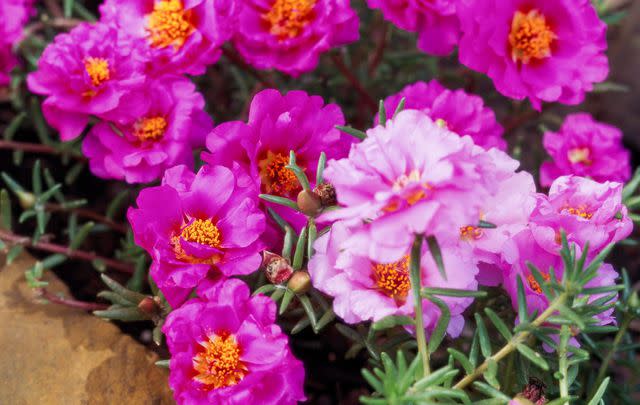
Moss rose (Portulaca grandiflora) is often grown as an annual in Zones 3-9, but it's actually perennial in Zones 10-11. This low-growing, flowering succulent groundcover comes in a variety of colors such as pink, red, yellow, and white. Plant a random mix of colors in your garden's hottest, sunniest, driest area for a cheery summer-long display.
Desert Rose
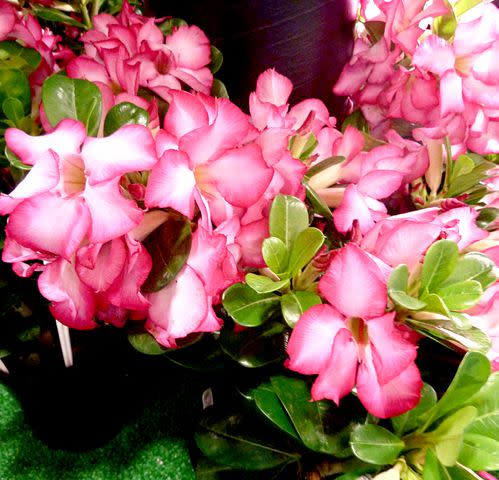
Despite its common name, a desert rose (Adenium obesum) is not actually a rose. It does come from desert regions in Africa and Asia, though. This flowering succulent is commonly grown as a houseplant in a sunny location but can be moved outdoors in summer if protected from the overhead midday sun. In summer, flowers appear in shades of pink, white, and red.
All parts of the desert rose are toxic to pets and humans if ingested. The sap can cause skin irritation.
Agave
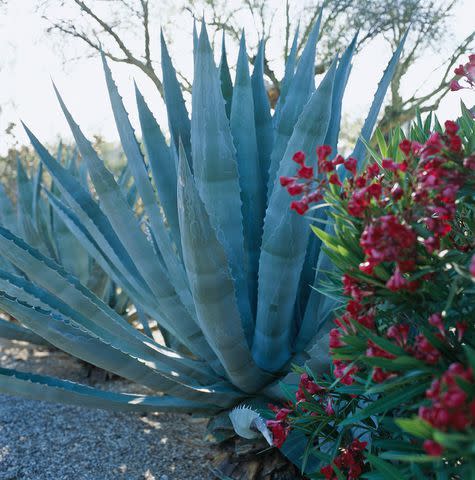
Most agave cacti (Agave spp.) flower only once and then die. Thankfully, they live long lives, usually taking between 8 and 80 years to bloom. The flower stalk ascends high above the plant and is covered in flowers as a fitting sendoff to these architectural beauties.
Stonecrop
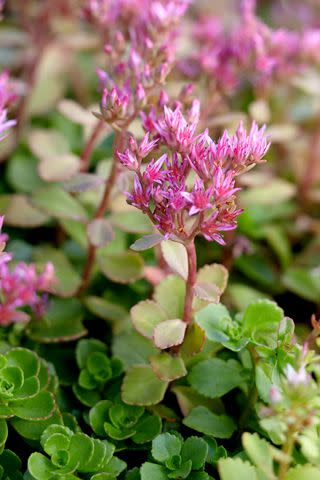
Stonecrop, also called sedum (Sedum spp.), is available in many different sizes and leaf colors. It is a popular plant and is easy to grow in a dry, full-sun garden. Some selections are grown primarily for the leaf color and shape, but many develop attractive white, yellow, red, or pink flowers to add to the show.
Related: 17 Best Sedum Plants That Will Look Gorgeous Through Heat and Cold
Torch Aloe
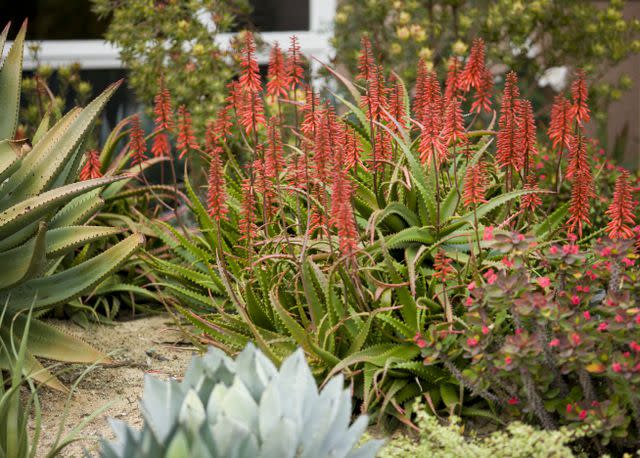
Ed Gohlich
Torch or krantz aloe (Aloe arborescens) is a member of the Aloe family, which includes hundreds of species. Many are grown as houseplants. Torch aloe can form large clumps with 1-2 foot tall flower spikes dressed in coral-red flowers at the tips. There's a variegated selection known as Aloe arborescens 'Variegata', which showcases beautiful green and cream striped leaves.
Bulbine
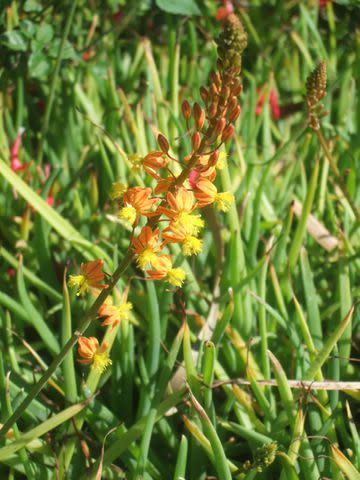
Denny Schrock
Bulbine (Bulbine frutescens) is a South African native that's popular in Texas and Florida gardens. It forms a clump up to 1 foot tall and 2 feet wide. Bulbine grows best in dry, sunny conditions but can tolerate light shade and moderate moisture. Be aware that extra shade and water may cause it to bloom less than expected. It has orange and yellow flowers and is reliably hardy in Zones 9-11, possibly cooler if protected through winter.
Yucca
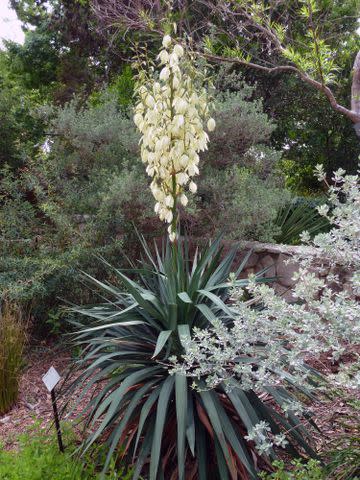
Denny Schrock
Several types of hardy yucca (Yucca spp.) are perennial garden stalwarts, especially in dry gardens. Tall stalks covered in white flowers will appear in summer, but the plants likely only bloom every 2-3 years. The white flowers can last for weeks. Once the flowers fade, remove the stalk and enjoy the foliage until it blooms again.
Cholla
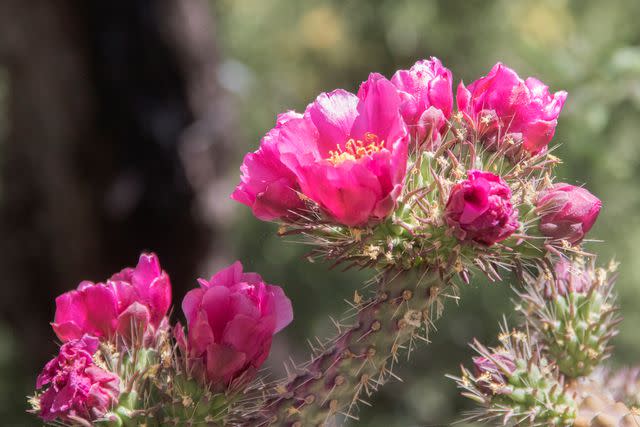
Hal Beral / Getty Images
Some cholla cacti (Cylindropuntia spp.) are hardy to at least -20°F and can grow up to 10 feet tall. The flowers range from greenish-yellow to pink and can last for months throughout summer. Cholla needs well-drained soil and should be kept dry through winter in cold climates. This plant makes an exciting statement in the garden when given the room to grow to maturity.
Dragon Fruit
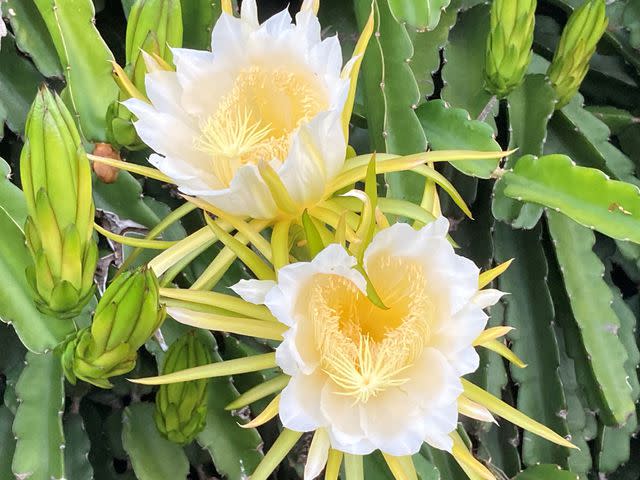
Alison Steiner / Getty Images
Dragon fruit (Selenicereus spp.), sometimes called pitaya, is popular in produce aisles nationwide. The massive flowers bloom at night, and each flower lasts only one evening, fading by mid-morning. It is worth staying up late to see it flower in person. It grows well in hot, humid weather and can be grown outdoors in pots and moved indoors in cool climates.
Ox Tongue
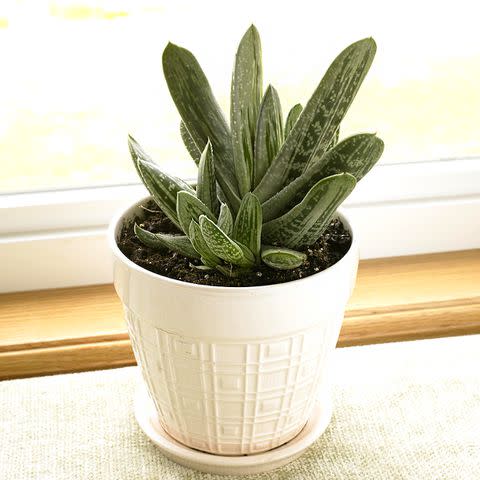
The robust, fleshy leaves of ox tongue plant (Gasteria spp.) are enough reason to grow this plant. It also produces tall flower spikes dangling with orange-pink and yellow-green flowers in early spring. It will grow well in a terracotta pot indoors in a spot with bright light.
For more Better Homes & Gardens news, make sure to sign up for our newsletter!
Read the original article on Better Homes & Gardens.

